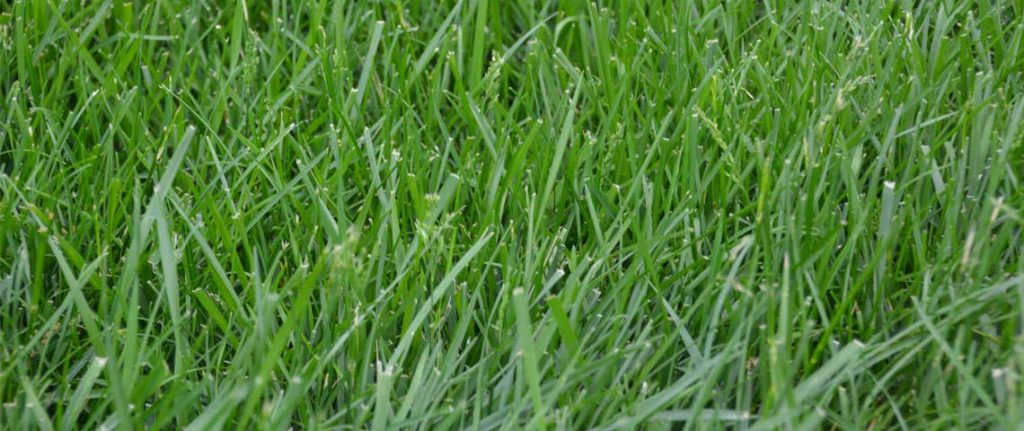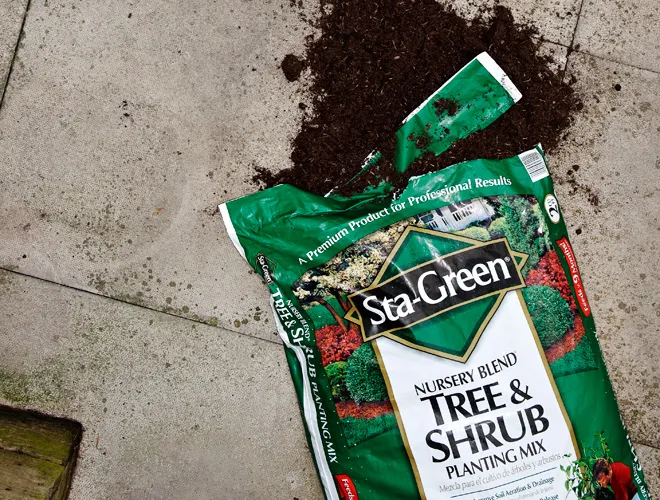If you have a lawn to maintain you probably know you would need different grass every season. Careful comparison and comparison of two of the most commonly planted cool-season grasses reveals big differences between them. If you choose the wrong type of grass, you might end up with a brown lawn instead of a lush, green one. It is difficult to decide which type of grass to use for your lawn since there are so many varieties to choose from.
Kentucky 31 vs Tall Fescue: Best and Worst
Kentucky 31 and Tall Fescue are two popular cool-season types of grass in the market. Each has its own advantages and disadvantages, which can only be assessed based on your own landscape requirements. You need to decide which grasses will grow well in your area based on the climate, soil conditions, and the types of grasses adapted for your area. So, in this article, we are going to talk about the characteristics of Kentucky 31 and Tall Fescue to help you determine the right one for you.
Kentucky 31


K 31 tall fescue grass seed was introduced to the United States from Europe in the early 1800s. The Kentucky 31 pasture grass is commonly used in livestock pastures. Tall fescue grasses are relatively low maintenance, yet they are unique for the increased heat tolerance they have compared to other fescue varieties.
Known for its light green and coarse texture, Kentucky 31 is an old “proven” lawn grass variety. The main reason for its popularity is due to the low prices and good overall properties. In lawns and turf, Kentucky 31 grass varieties are ideal.
Kentucky 31 tall fescue seed is grown in many U.S. grass-growing regions, including Missouri and Oregon. Despite being inexpensive and easy to establish, Pennington Kentucky 31 Tall Fescue Grass Seed continues to be a preferred lawn care solution for those that are resistant to heat, drought, and wear. Kentucky 31 helped transform tall fescue grasses from pasture to lush, durable, manicured lawn. It is easy to establish, drought-resistant, and heat tolerant, which are valued by lawn owners.
Specifications
The following desirable attributes make Kentucky 31 a great grass for lawns:
- Cost-effective and easy to implement
- Water-repellent.
- Wears well despite heavy traffic.
- Kentucky 31 varieties with greater heat tolerance
- An attractive shade of green.
K-31 is a good grass for basic lawns by homeowners, it is widely used in lawns all over the country.
Kentucky Tall Fescue
A research project was launched by sampling the seeds from long-established Kentucky fields. In 1942, the grass was introduced into the agricultural seed market as Kentucky 31 tall fescue, which was the name given to the variety in the year and state of discovery.1 It quickly gained popularity for its use as agricultural grass, a wildlife habitat, and to control eroding areas. Tall fescue thrives on deep roots, requiring little water to grow.
There are many reasons to love tall fescue, including its ease of planting and its ability to establish deep roots. The roots of tall fescue grass can reach depths of 2-3 feet underground. Summer heat and drought can be more tolerable on the grass when it has this protection.
Filler grasses like tall fescue are great for yards since they thrive in as little as 4 hours of direct sunlight a day, resist droughts, and are hardy. Bunches of tall fescue grass grow together. Its main strength is not self-repair, so it requires more gentle handling than other grass species. A high proportion of tall fescue is grown during the spring and fall when the temperatures are cool. Cool-season tall fescue grows effectively in shade due to its cool-weather nature.
Specifications
These are the characteristics of Tall Fescue grass:
- does well in droughts and heat.
- consumes little water
- Suitable for use in heavy traffic
- Adaptable to both shade and sunlight.
- Low nitrogen requirement
- Contains anti-microbial properties.
Kentucky 31 or Tall Fescue: Which Is Better?
There is nothing that can measure the better one between Kentucky 31 and Kentucky Tall Fescue as they both fulfill different requirements and they both have different usages. There are many factors to consider, including your environment, your soil, and your lawn care routine.
The main differences between these two grass types are given below:
Growing Traits
The most vigorous growth of Kentucky 31 happens in fall and spring when the temperatures are cooler. While tall fescues generally experience greater heat tolerance than other varieties of cool-season grass, Kentucky-31 is more heat resistant and resistant to drought than many tall fescue varieties. Bulks of tall fescue grow together.
It is possible that a damaged clump cannot be repaired. Kentucky 31 grows best in full sun, while fescue thrives in shade. The shallow root structure of Kentucky necessitates a higher level of irrigation. Taking the time to water and care for KBG will help this plant grow strong and healthy.
Usage
Kentucky 31 and Tall Fescue are respectively beneficial to different kinds of applications. Its strong and independent nature makes Kentucky 31 grass good for playgrounds and Tall Fescue is used for growing hay in fields for livestock. If seeded thickly, however, both can produce a good-looking lawn that is durable. When many imagine a thick blanket of soft, green grass, you can picture Kentucky 31. Tall Fescue lawns benefit from plenty of water and a regular maintenance regimen, particularly lush lawns and low-traffic areas
In areas with a dry and hot climate, tall fescue has a deep root system that makes it more heat resistant. But foot traffic lessens the resistance of tall fescue. Athletic fields are made from Kentucky 31. Foot traffic can quickly restore it. Due to the way stems and roots of KBG grass intertwine on the surface of the soil, the grass forms an intertwined turf. So, Tall Fescue grass is for live animal stock and Kentucky 31 is for turf.
Shade
Kentucky 31 and Tall Fescue grass are different in their color shades as well. The Kentucky 31 is a bit of a darker shade of green and the Tall Fescue grass is a bit of lighter shades of green.
Fertilizer
Different plants require different fertilizers when it comes to tall fescue and Kentucky 31. In order for a 1,000 square foot area of tall fescue grass to thrive, one pound of nitrogen is required. Watering is not a necessity, so mowing is not as necessary either. Grass requires three pounds of nitrogen per square foot in Kentucky 31. As well as Nitrogen, more frequent mowing is needed to address irrigation requirements.
Maintenance
In contrast to Kentucky, Tall Fescue forms sods that cover the bare spots left on your lawn when they spread instead of growing in clumps, which may leave your lawn with bare patches. Because of this, it is a good idea to overseed your lawn regularly when you choose Tall Fescue.
Mixing Kentucky 31 and Tall Fescue Grass
For lawns already established on turf-type tall fescue, you should stick with that. The combination of Kentucky seed and turf-type tall fescue is acceptable. It often provides a better result. Kentucky 31 and Tall Fescue are quite similar. In fact, Tall Fescue is the upgraded version of Kentucky 31. Tall fescue is susceptible to Rhizoctonia Solani, while Kentucky 31 is slow to establish and weed-prone. The combination of Kentucky 31 and Tall Fescue in seeding mixtures have been shown to have benefits in prior studies.
The Kentucky 31 and tall fescue mixture and the tall fescue blend generally received higher quality ratings. The tall fescue-Kentucky 31 -perennial ryegrass mixtures have given many positive results. In addition to their minor effects on turfgrass quality, nitrogen and cutting height did not have any significant effects on botanical composition. Mixtures made up of 80 to 90 percent tall fescue (by weight) and 10 to 20 percent Kentucky 31 seem to work well.
However, if you accidentally mix the wrong ratio of chemicals and fertilizers it will not give you a positive outcome. So, you must be careful with that. Also, you must make sure that the ratio of chemicals, fertilizers, and grass seeds is correct. If you still get confused, it is better to take help from an expert. Only mixing in the correct ratio can give a positive outcome.
STA Green VS Scotts: A Data-Driven Comparison
Final words
You should think about your lifestyle, needs, and location before choosing Kentucky 31 or Tall Fescue since they flourish in different climates. Tall fescue is more heat tolerant and requires less maintenance, while Kentucky 31 is best suited for cooler areas. Kentucky 31 and Tall Fescue will both need to be watered and fertilized regularly, depending on what they will be used for and the environmental conditions of their habitat.
As another alternative, Tall Fescue can be mixed with Kentucky 31 which will provide you a better result. However, if you prefer low-maintenance grass for your lawn then you should go with Kentucky as it requires very little maintenance.
